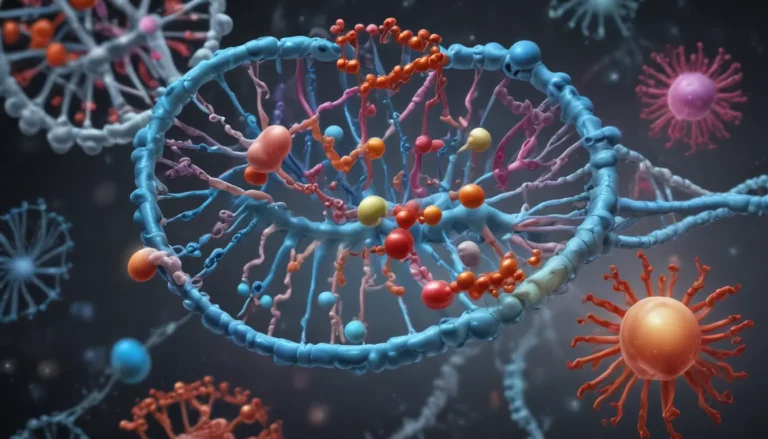A Note About Images: The images used in our articles are for illustration purposes only and may not exactly match the content. They are meant to engage readers, but the text should be relied upon for accurate information.
Welcome to the captivating world of groundwater flow, where hidden treasures beneath our feet shape our environment and sustain life as we know it. In this article, we will delve deep into the complexities of groundwater flow, uncovering ten fascinating facts that showcase the importance and wonder of this invaluable resource. From the slow and steady movement of groundwater to its vital role in ecosystems and human activities, prepare to be amazed by the mysteries of groundwater flow.
Unveiling the Hidden World of Groundwater
Beneath the Earth’s surface lies a mysterious realm of water-filled rock formations known as aquifers. These underground reservoirs contain groundwater, a vital resource that flows and circulates in a complex system essential for sustaining life. Despite its unseen nature, groundwater is a fundamental component of the Earth’s water cycle, connecting with surface water sources and shaping the landscape over time.
The Slow Dance of Groundwater
Contrary to popular belief, groundwater does not rush through the ground like a river. Instead, it moves at a slow and steady pace, traveling at a rate of meters or even centimeters per day. This sluggish movement is influenced by factors such as the permeability of rocks and the slope of the land, shaping the underground world in a gradual but impactful manner.
Following the Path of Least Resistance
Similar to a river meandering downhill, groundwater flows along the path of least resistance. It filters through porous rocks like sand and gravel or navigates through fractures and fissures in harder rocks, sculpting the underground landscape with its gentle but persistent flow.
Human Influence on Groundwater Flow
Human activities have the power to alter the natural flow of groundwater, impacting water levels and quality. Excessive pumping, well construction, and pollutants can disrupt the delicate balance of groundwater systems, emphasizing the importance of understanding and conserving this precious resource for future generations.
The Interconnectedness of Groundwater and Surface Water
Groundwater and surface water are intricately linked, with groundwater feeding into rivers, lakes, and oceans while surface water infiltrates the ground to become part of the groundwater system. This interconnected relationship sustains ecosystems, providing water and nutrients to plants and animals that depend on these vital resources for survival.
Sustaining Life Through Groundwater Flow
Groundwater plays a crucial role in supporting ecosystems, providing essential water and nutrients to a variety of plant and animal species. Springs and wetlands, fueled by groundwater flow, create critical habitats that contribute to the biodiversity and balance of our natural world.
The Geological Legacy of Groundwater Flow
Over millennia, groundwater flow has carved out stunning geological formations, including underground caves and caverns adorned with intricate stalagmites and stalactites. These mesmerizing wonders attract scientists and explorers alike, showcasing the transformative power of groundwater in shaping the Earth’s landscape.
Natural Factors Influencing Groundwater Flow
Rainfall, temperature, and geological structures are key natural factors that influence groundwater flow. The amount and seasonality of precipitation, as well as the type of rocks in an area, play significant roles in determining the movement and direction of groundwater through the subsurface.
The Complex Science of Studying Groundwater Flow
The hidden nature of groundwater flow presents challenges in studying this complex system. Scientists utilize specialized tools and techniques such as groundwater modeling, geophysical surveys, and well monitoring to gain insights into the dynamics of groundwater movement below the Earth’s surface.
Preserving Groundwater for Future Generations
Groundwater serves as a vital source of drinking water for millions worldwide, emphasizing the importance of proper management and protection of this invaluable resource. By safeguarding groundwater reserves and implementing conservation measures, we can ensure a sustainable and reliable water supply for future generations.
Embracing the Wonder of Groundwater Flow
In conclusion, the study of groundwater flow offers a captivating journey into the depths of our planet, revealing the hidden world that sustains life above ground. Whether you’re interested in hydrogeology, environmental conservation, or simply curious about Earth’s water cycle, the mysteries of groundwater flow offer a rich tapestry of exploration and discovery. So, next time you savor a glass of water, remember the remarkable journey it took from underground aquifers to your fingertips.
FAQs: Exploring Groundwater Flow
-
What is groundwater flow?
Groundwater flow refers to the movement of water beneath the Earth’s surface through porous rocks and soil, filling the spaces between grains to create a saturated zone. -
How does groundwater flow affect the environment?
Groundwater flow sustains ecosystems by providing water and nutrients to plants and animals, supporting diverse habitats, and maintaining the quality and availability of drinking water. -
What factors influence groundwater flow?
Factors such as land slope, rock permeability, precipitation levels, and the presence of barriers impact the movement and direction of groundwater within subsurface regions. -
Can human activities impact groundwater flow?
Yes, activities like pumping, pollution, and construction can alter groundwater flow patterns, leading to depletion of resources and contamination of aquifers. -
How can we measure groundwater flow?
Hydrogeologists use techniques like monitoring wells, tracer studies, and data analysis to measure groundwater flow and understand its dynamics over time. -
Is groundwater flow constant?
Groundwater flow varies based on factors like season, rainfall, and geology, with faster flow in permeable areas and slower flow in less permeable regions. -
Can groundwater flow uphill?
Groundwater typically flows downhill due to gravity, but in some cases, hydraulic pressure or geological structures can redirect flow against the natural slope of the land. -
How is groundwater flow important for agriculture?
Groundwater flow supports agriculture by providing water for irrigation, essential for crop growth and productivity in areas with limited surface water resources. -
Can groundwater flow be affected by climate change?
Climate change can impact groundwater flow through alterations in precipitation, evaporation, and temperature, affecting recharge rates and availability of groundwater in regions. -
How can we protect and conserve groundwater flow?
Protecting groundwater involves responsible water usage, proper waste management, avoiding harmful chemicals near water sources, and promoting sustainable farming practices to minimize water consumption.
As we unravel the mysteries of groundwater flow, let us appreciate the vital role it plays in shaping our environment and sustaining life on Earth. By understanding and preserving this hidden treasure beneath our feet, we can ensure a bountiful and secure future for generations to come. Dive into the wonders of groundwater flow and embark on a journey of exploration and discovery that will deepen your appreciation for the hidden world that sustains us all.






